Remember watching cartoons and movies as a kid and seeing all of those awesome tech devices and wishing you could have one (or two, or all of them)? Well, the future is now, as wearables are becoming more mainstream and technology advancements are made every day. And, consumers are paying attention, as PricewaterhouseCoopers (PwC) reported in their Consumer Intelligence Series, The Wearable Future report: 53% of millennials and 54% of early wearables adopters say they are excited about the future of wearable tech, including the potential benefits of improved safety, healthier living, and simplicity and ease of use. PwC also found that 72% of people find it very important for wearable technology to improve customer service, and 76% of busy parents want wearable tech to make shopping a more pleasant, efficient experience. Similarly, 50% of millennials say they would be strongly motivated to don a wearable if it “has apps/features that reward those who frequently use it.”
The capabilities of wearables are just beginning to emerge for retail, enterprise, and consumers. While their sales are not expected to compete with those for smartphones and tablets for some time, their impact on technology is far greater. As Multichannel Merchant points out, wearables “will become the interface between body, apps, data, and last not but not least, services. This creates the opportunity especially for local retailers.” Wearables have the ability to collect personal information such as biometric data, location data, spending data, and more. Scott Bauer, PwC’s U.S. retail and consumer practice partner and omnichannel leader imagines wearable technology will “shift retail conventions as retails will be able to connect the dots between pre-store and in-store behavior, and reach a new level of interconnected retail. How consumers pay for purchases and interact with the retailer while in store is expected to be radically redefined by wearable technology and retailers cannot afford to ignore the impact it could have on their bottom line.”
But, wearables will not just impact retail and its customer service. We have found companies that already are utilizing wearables to impact the enterprise, as well as those that are piloting wearable programs to impact customer service, customer satisfaction, and the customer experience. These innovative examples (and possible examples) of wearable tech in customer service are inspiring, and we share them below so that you can get inspired, too. The possibilities for wearables are potentially limitless, and it’s just as exciting now as it was when we were watching those cartoons and shows all those years ago.
Please note, we have listed innovative examples (and possible examples) of wearable tech in customer service here, in no particular order.
1.
Customizable Shopping Paths
@iSIGNMedia

iSIGN Media already helps businesses target customers with relevant offers through Bluetooth and Wi-Fi technology, without needing an app. According to a Retail TouchPoints article, iSIGN Media’s CEO Alex Romanov suggests that retailers should use wearable tech to “create customizable shopping paths for each person, while incentivizing them with real-time offers and deals along that path – it would help make customers’ shopping experiences much more convenient.” Romanov envisions retailers making use of the granular data, such as in-store shopping frequency, dollar value per item, and more, gathered by wearable devices to enhance customer service and improve sales.
2.
Amazon’s Mayday Service
@amazon
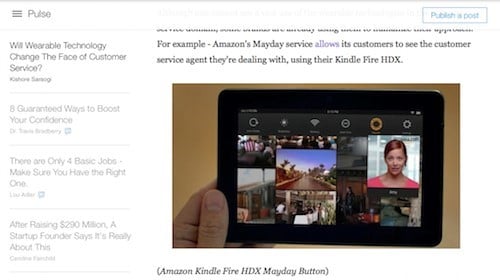
Kishore Saraogi, owner/director at O’Currance Teleservices, Inc., explores how wearable tech will affect customer service in his LinkedIn Pulse article. He refers to Amazon’s Mayday Service, which connects Kindle Fire HDX and Fire Phone users to an Amazon Tech advisor whom they can see and speak with while receiving service and support. As Saraogi points out, this approach to customer service humanizes the approach and would be an innovative possible example of wearable tech in customer service, as customers would be able to access this personalized service using a wearable tech device.

While Google may have discontinued the availability of its Google Glass Explorer Edition, BetaNews.com reports that Google Glass Enterprise Edition is soon to be launched, with its target being the business environment. Google already has launched its Glass for Work program and is encouraging developers to design apps intended for enterprises. In fact, some enterprises are using this innovative wearable tech in customer service, because it enables employees to deliver personalized service using customer data in a heads-up manner, rather than with employees staring at computer or tablet screens.
4.
More informed customer service
@FutureCommrce
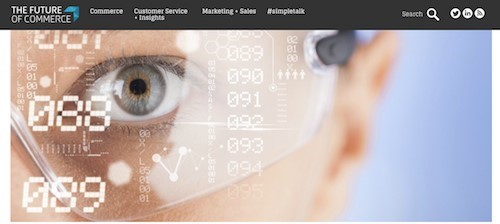
The Future of Commerce offers commerce news and trends, including this innovative possible example of wearable tech in customer service. More informed customer service is one benefit of wearable tech, as marketers and customer service teams could gain precise data from every step of the shopper’s journey, thanks to a smartwatch or other type of wearable. Customer personalization is much easier to achieve when wearables collect granular data, “such as a user’s in-store shopping frequency, their basket size, dollar value per item, as well as personal information, such as what the customer ‘likes,’ what they browse, and their body type is.” Because wearables are always on, companies get an unprecedented level of Big Data gathering to provide more informed customer service.
5. Theatro
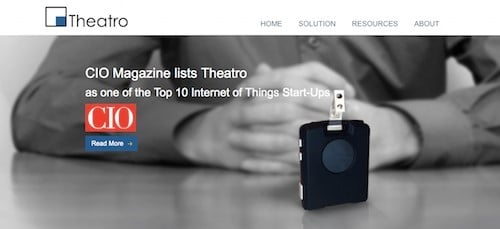
Theatro is expanding to a new office in Bangalore, as an extension of the company’s development team located in Dallas, Texas. In a Retail TouchPoints article, Theatro EVP, Patrick Fitzgerald, says he sees wearables impacting customer service by making it possible for employees to be “heads up and hands free,” which allows them to “provide customer service and not be heads down, focused on a screen.” Fitzgerald also is looking forward to enterprise wearable tech’s potential ROI through productivity improvements that result in optimized labor costs and improved customer service.
6.
The Container Store
@ContainerStore
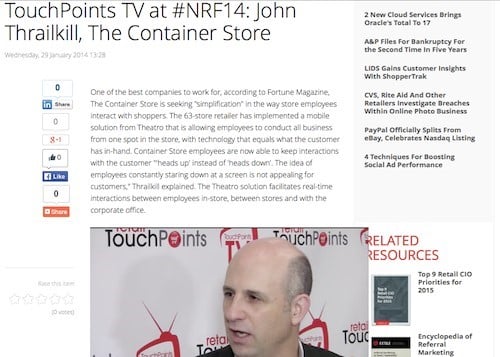
The Container Store is using wearable tech from Theatro to simplify the customer experience in their stores and the way in which store employees interact with shoppers. Retail TouchPoints TV showcases how the Container Store is enhancing customer service through improved employee interactions with customers as part of their employee first culture. Their wearables allow employees to stay with the customer while getting information and remaining heads up while interacting with customers. Thanks to the wearable tech from Theatro, Container Store employees can communicate with one another, tap into the entire knowledge base and get information in one location, and be more productive, which naturally improves customer service.
7.
Vuzix M100
@Vuzix
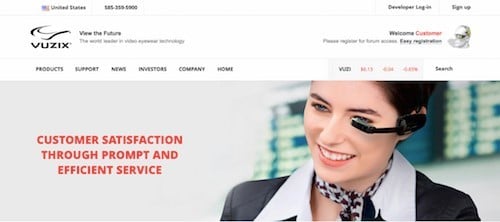
Vuzix Corporation is a leader in smart glasses technology. As this Cognizant 20-20 Insights article describes, smart glasses like Vuzix M100 will have a high impact on customer service. Wearable tech will enable customer service representatives to take service far beyond addressing and resolving customer complaints. They use an innovative example from the hotel industry: a hotel staffer wears smart glasses like Vuzix M100 that integrate with the hotel hospitality app and the customer service system. She is able to retrieve customer information on her Vuzix M100 just as the hotel guest arrives in the lobby, so she greets him by name. She immediately begins the check-in process for the guest by identifying booking details and preferences with her Vuzix M100. She then tracks the guest’s loyalty points, gives him options about redeeming them or accumulating more, informs the guest of weather and local events at his destination, and then translates the information into his native language. Later, she offers food and drinks and other services based on the customer’s choice. This type of highly responsive, relevant, effective service is a possibility with wearable tech like Vuzix M100.
8. Apple Watch

When the Apple Watch was released, Apple enthusiasts scrambled to purchase one as they saw an incredibly personal wearable device that would bring convenience to their lives. But, businesses recognized the Apple Watch as an innovative example of wearable tech in customer service. Cognizant predictssmartwatches like Apple Watch will have a medium impact on customer service, as they will provide a “single view of the customer across products and geographies. The Apple Watch will help those in the banking industry, for example, retrieve information about customers such as their total investments in deposits, equities, treasury bills, etc., and then check the equity market and suggest new products thanks to third party apps available for Apple Watch.
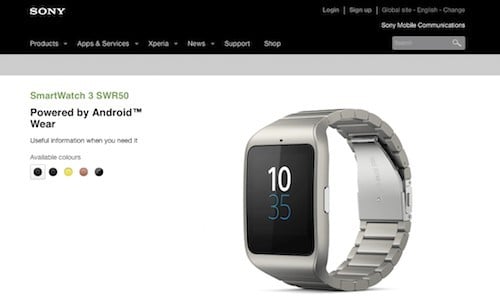
The Sony SmartWatch 3, powered by Android Wear, delivers “useful information when you need it.” The Sony SmartWatch already gives wearers useful information at a glance, including tips based on interest and flight information. The Sony SmartWatch also is an innovative example of wearable tech in customer service, because it provides employees with the ability to personalize service plans. Cognizant offers one such example from the telecom industry. In their example, a telecom agent accesses a CRM system using an app through his smartwatch, such as a Sony SmartWatch 3. He then views his prospect details and presents the tariff plan using his smartwatch. This innovative possible example of wearable tech in customer service enables the telecom agent to customize a service plan because the information is available in real time at the touch of a button on his wrist.
10.
Samsung Gear S
@SamsungMobileUS
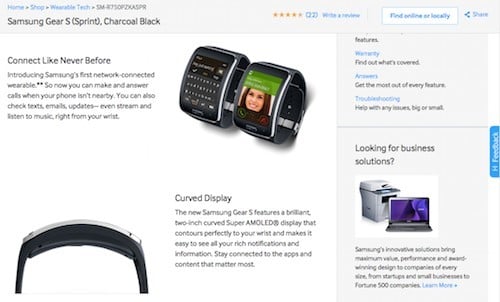
Samsung Gear S is a network-connected wearable that delivers “rich notifications and news briefing.” These smartwatches feature a two-inch curved Super AMOLED display that contours to the wrist, so that you see all of your information easily. Cognizant outlines the benefits of this innovative example of wearable tech in customer service: the smartwatch provides a single view of the customer across products and geographies, identifies various sales opportunities that lead to profitable, long-term customer relationships, and scales to accommodate and deliver required capabilities.



